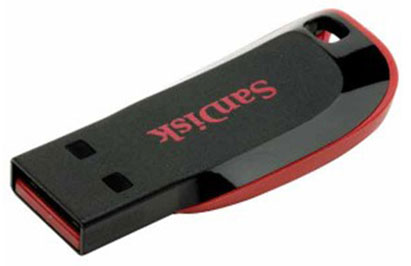“USB device not recognized” – SanDisk memory stick

I have a ScanDisk Cruzer USB Memory Stick Slice 32 GB that I used for data transfer (only music and movies).
My USB worked well until two days ago, but now no longer recognized by my PC.
Every time you connect to PC, I get the message "USB device not recognized". It is a problem with my PC or my stick? Thanks!













